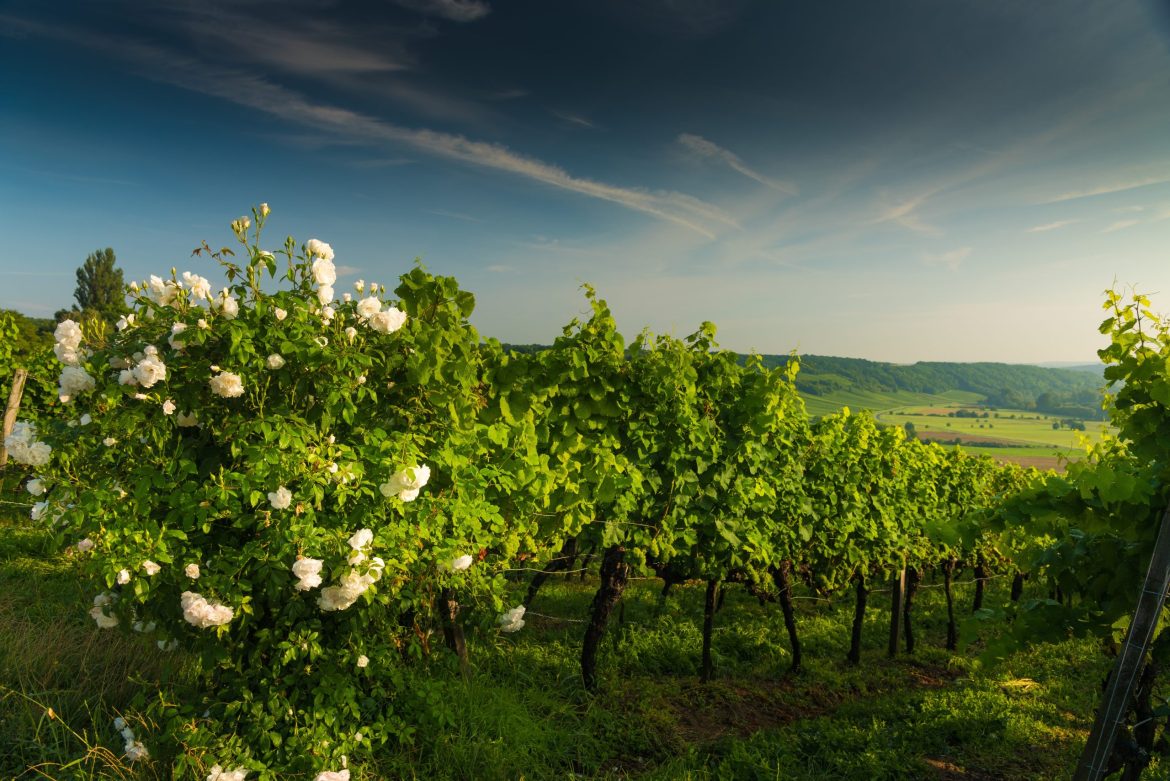Banat Region is located in the south-west of Romania and stretches over the counties of Caras-Severin, Timis and Arad (south of Mures). The term "banat" refers to a frontier province governed by a ban/ ban (in Hungarian Bánság).[2] Here live together in harmony Romanians, Serbs, Hungarians and Swabians, their culinary dowry being accompanied on all important occasions in life by locally produced wine.
Main varieties
White: Chardonnay, Feteasca alba, Feteasca regala, Muscat Ottonel, Pinot gris, Riesling de Rhin, Italian Riesling, Sauvignon, Tamaioasa romaneasca, Traminer rose, Viognier
Black: Burgundy, Cabernet Franc, Cabernet Sauvignon, Black Feteasca, Merlot, Pinot Noir, Syrah
Geographical indications
- PDO Recas
- D.O.P. Banat (with the sub-denominations Moldova Noua, Dealurile Tirolului and Silagiu).
- I.G.P. Viile Timisului
- I.G.P. Viile Carasului
History
Being a frontier area, not many documents related to vine cultivation have been preserved in the Banat archives, but there are relics showing that the wave of German settlers in the 17th century practiced this occupation, and in Recas there are inscriptions from 1747 mentioning this. Old wine grape varieties: Majarca alba , Majarca and Created by Banat are no longer cultivated, but they have not been forgotten, and nowadays we are trying to bring them back to the attention of consumers, by setting up small demonstration plantations (less than 0.1 ha) in the Buzias area.
Terroir
Relief: the south-western hills of the western subcarpathians, to the East, the Semenic Mountains and the Poiana Rusca Mountains, to the North, the Lipovei Hills and the Mures, to the South: the Danube and to the West the Timis countryside; Pante line, sunny; Exhibition: S-E, S, S-V; Altitude: 100-350 m; Soil [1]: marl, clay, sand, gravel, prundis, loessoid prafos; Multiannual average temperature: 10,5-11,4oC; Precipitation: 550-895 mm multi-year average; Over 30 of tropical days annual; winters moderate (21-30 days annually). Over 2100 hours of sunshine annual. Rare extreme weather eventsbut when they do occur, they are late frosts, hail, thunderstorms with massive waterfalls in a very short time, causing flooding in low lying areas. Fog persistent in the morning, in the autumn months. Italian investors have seen the potential of the region and are now an integral part of Banat’s wine industry. The plantations tend to produce a lot, the grapes accumulate sugars that can give a naturally occurring alcoholic strength of over 13% vol. alc, at a total acidity of more than 5,5 g/l expressed as tartaric acid.
Sources:
- Toti, M.; Vlad, V.; Dumitru, M.; Calciu, Irina – Soil – basic element of the concept of "Terroir" (2017), Ed. Terra Nostra, Iasi
- https://koaha.org/wiki/Banato
- www.onvpv.ro



